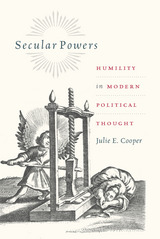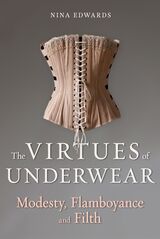3 books about Modesty

Fictions of Modesty
Women and Courtship in the English Novel
Ruth Bernard Yeazell
University of Chicago Press, 1991
From the late seventeenth century to the beginning of the twentieth, no figure was more central to debates in England about the relations between the sexes than that of the modest woman. Drawing on a wide range of narratives from the period, Ruth Bernard Yeazell analyzes the multiple and conflicting wishes that were covered by talk of "modesty" and explores some of the most striking uses of a modest heroine.
Combining evidence from conduct books and ladies' magazines with the arguments of influential theorists like Hume, Rousseau, and Wollstonecraft, this book begins by asking why writers were devoted to the anxious remaking of women's "nature" and to codifying rules for their porper behavior. Fictions of Modesty shows how the culture at once tried to regulate young women's desires and effectively opened up new possibilities of subjectivity and individual choice.
Yeazell goes on to demonstrate that modest delaying actions inform a central tradition of English narrative. On the Continent, the English believed, the jeune fille went from the artificial innocence of the convent to an arranged marriage and adultery; the natural modesty of the Englishwoman, however, enabled her to choose her own mate and to marry both prudently and with affection. Rather than taking its narrative impetus from adultery, then, English fiction concentrated on courtship and the consciousness of the young woman choosing. After paired studies of Richardson's Pamela and Cleland's Memoirs of a Woman of Pleasure (even Fanny Hill, Yeazell argues, is a modest English heroine at heart), Yeazell investigates what women novelists made of the virtues of modesty in works by Burney, Austen, Charlotte Bronte, and Gaskell.
A speculative postscript briefly addresses the discourse of late nineteenth-century science in order to show how Darwin's theory of sexual selection and Havelock Ellis's psychology of sex replicate fictions of female modesty. While those who sought to codify modest behavior in previous centuries often appealed to Nature for support, our modern understanding of the natural, Yeazell suggests, owes something to the work of the novelists.
Sharply reasoned and witty, Fictions of Modesty will appeal to all those interested in women's studies, the English novel, and the continuing history of relations between the sexes.
Combining evidence from conduct books and ladies' magazines with the arguments of influential theorists like Hume, Rousseau, and Wollstonecraft, this book begins by asking why writers were devoted to the anxious remaking of women's "nature" and to codifying rules for their porper behavior. Fictions of Modesty shows how the culture at once tried to regulate young women's desires and effectively opened up new possibilities of subjectivity and individual choice.
Yeazell goes on to demonstrate that modest delaying actions inform a central tradition of English narrative. On the Continent, the English believed, the jeune fille went from the artificial innocence of the convent to an arranged marriage and adultery; the natural modesty of the Englishwoman, however, enabled her to choose her own mate and to marry both prudently and with affection. Rather than taking its narrative impetus from adultery, then, English fiction concentrated on courtship and the consciousness of the young woman choosing. After paired studies of Richardson's Pamela and Cleland's Memoirs of a Woman of Pleasure (even Fanny Hill, Yeazell argues, is a modest English heroine at heart), Yeazell investigates what women novelists made of the virtues of modesty in works by Burney, Austen, Charlotte Bronte, and Gaskell.
A speculative postscript briefly addresses the discourse of late nineteenth-century science in order to show how Darwin's theory of sexual selection and Havelock Ellis's psychology of sex replicate fictions of female modesty. While those who sought to codify modest behavior in previous centuries often appealed to Nature for support, our modern understanding of the natural, Yeazell suggests, owes something to the work of the novelists.
Sharply reasoned and witty, Fictions of Modesty will appeal to all those interested in women's studies, the English novel, and the continuing history of relations between the sexes.
[more]

Secular Powers
Humility in Modern Political Thought
Julie E. Cooper
University of Chicago Press, 2013
Secularism is usually thought to contain the project of self-deification, in which humans attack God’s authority in order to take his place, freed from all constraints. Julie E. Cooper overturns this conception through an incisive analysis of the early modern justifications for secular politics. While she agrees that secularism is a means of empowerment, she argues that we have misunderstood the sources of secular empowerment and the kinds of strength to which it aspires.
Contemporary understandings of secularism, Cooper contends, have been shaped by a limited understanding of it as a shift from vulnerability to power. But the works of the foundational thinkers of secularism tell a different story. Analyzing the writings of Hobbes, Spinoza, and Rousseau at the moment of secularity’s inception, she shows that all three understood that acknowledging one’s limitations was a condition of successful self-rule. And while all three invited humans to collectively build and sustain a political world, their invitations did not amount to self-deification. Cooper establishes that secular politics as originally conceived does not require a choice between power and vulnerability. Rather, it challenges us—today as then—to reconcile them both as essential components of our humanity.
[more]

The Virtues of Underwear
Modesty, Flamboyance and Filth
Nina Edwards
Reaktion Books, 2024
Laced with illustrations of undergarments both prosaic and exotic, a global exposé of the hidden meaning of knickers, lingerie, and everything in between.
This book unravels the intimate narratives woven into the fabric of our most personal garments. From the first loincloths to the intricate layers of shapewear, the narrative explores the concealed world of underwear as a silent communicator of individual desire and societal affiliation. As an indicator of the pulse of fashion, underwear has evolved from minimalism to intricate designs with new materials. Beyond its role in denying our corporeal nature, underwear safeguards and exposes, reflecting our innermost desires and past experiences.
From clean underclothing resisting carnal urges to the protective embrace of fabric, this book illuminates the profound, often hidden stories told by the garments beneath our outer layers. It rewards the reader with historical insights into both women’s and men’s underwear and global cultures of dress.
This book unravels the intimate narratives woven into the fabric of our most personal garments. From the first loincloths to the intricate layers of shapewear, the narrative explores the concealed world of underwear as a silent communicator of individual desire and societal affiliation. As an indicator of the pulse of fashion, underwear has evolved from minimalism to intricate designs with new materials. Beyond its role in denying our corporeal nature, underwear safeguards and exposes, reflecting our innermost desires and past experiences.
From clean underclothing resisting carnal urges to the protective embrace of fabric, this book illuminates the profound, often hidden stories told by the garments beneath our outer layers. It rewards the reader with historical insights into both women’s and men’s underwear and global cultures of dress.
[more]
READERS
Browse our collection.
PUBLISHERS
See BiblioVault's publisher services.
STUDENT SERVICES
Files for college accessibility offices.
UChicago Accessibility Resources
home | accessibility | search | about | contact us
BiblioVault ® 2001 - 2024
The University of Chicago Press









